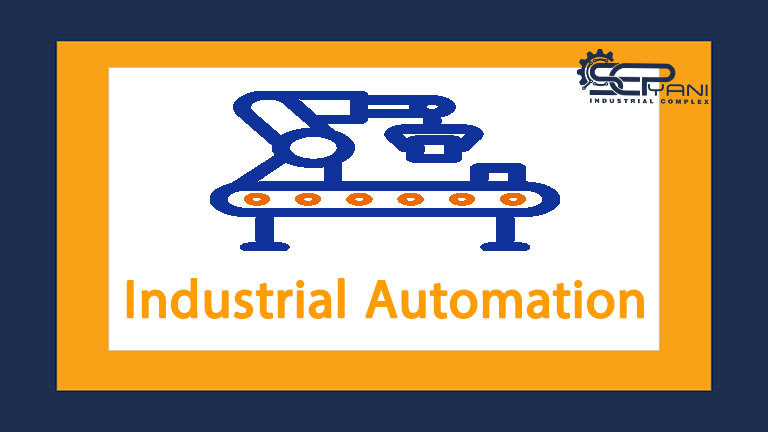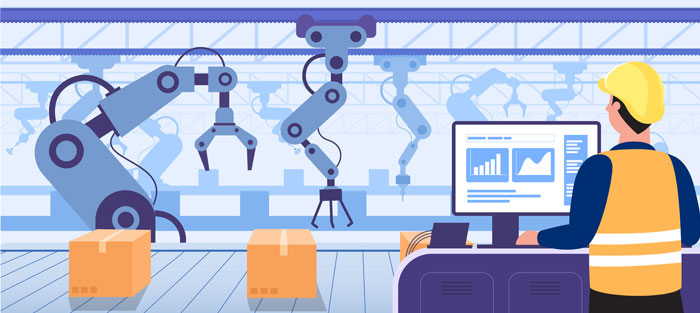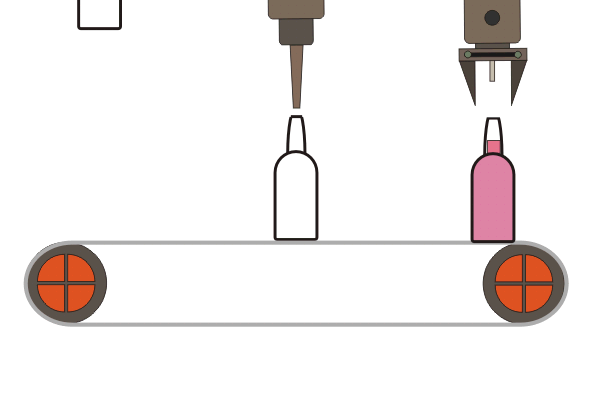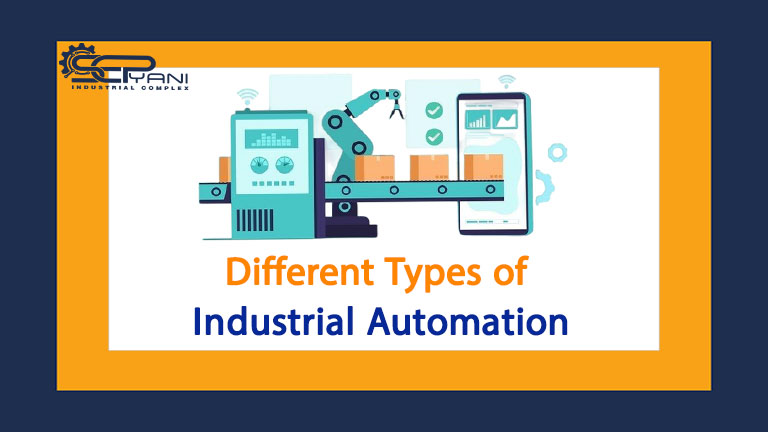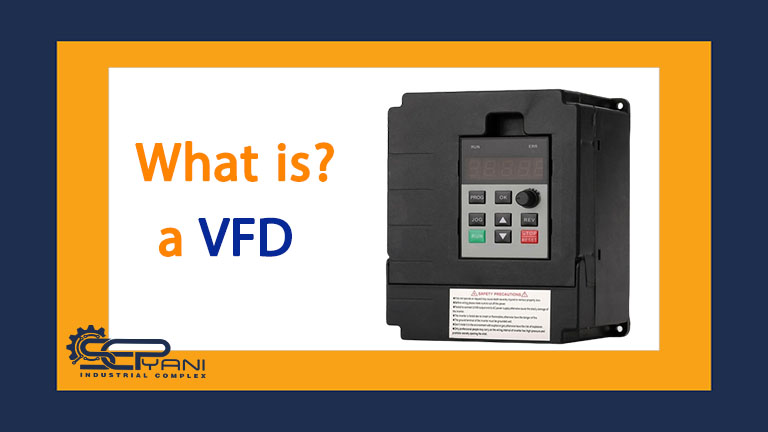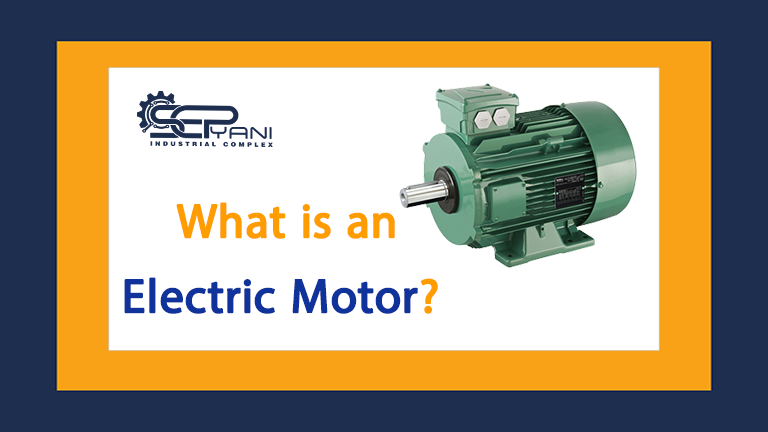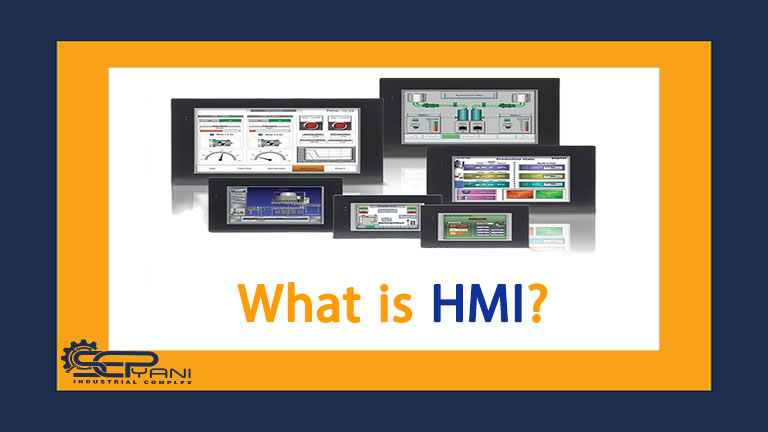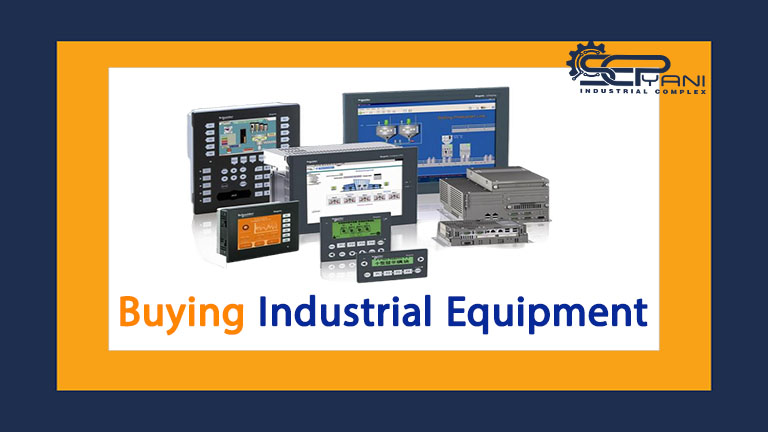In this article, we are going to discuss the topic of industrial automation
- What is factory industrial automation?
- What is its use?
- What are the advantages and disadvantages?
- What are industrial automation equipment?
- How can we equip our factories with industrial automation?
What is factory industrial automation?
Factory industrial automation refers to the control of machines and processes used in various industries, which is done by independent systems and mainly through the use of new technologies such as robotics and computer software.
By using industrial automation, all steps are done automatically with software, and by applying industrial automation and replacing it with humans, the percentage of errors is reduced, and also the efficiency of quantity and quality of work is increased. As a result they will be more profitable, and it is possible to eliminate human operators in This part transferred them to other parts.
Most industries implement automation to increase productivity and reduce costs related to personnel, machinery and tools, and other related costs, while greatly increasing accuracy and flexibility in doing so.
Industrial automation is a combination of mechanization and automation
Mechanisation:
With the industrial revolution came mechanization, which brought cheaper and more abundant goods. In general, mechanical processes in industries were faster and produced larger quantities of goods, but there was still a great need for skilled workers. Machines not only needed an operator, but in case of errors, they also wasted materials, and this caused many problems in the field of production and even damage to the equipment.
Automation:
With the advent of automation, control loops were added to machine operation, which could be open control loops that allow human input or closed loops that are fully automated. Industrial control systems (ICS) provide local and remote monitoring and control. With these advanced control mechanisms, industries can work 24 hours a day. Productivity increases, errors decrease, and quality improves.
Also it should be noted that recent advances in automation in industrial production have focused on flexibility and quality. In the past, the goal of automation was to increase productivity (since automated systems can run 24 hours a day) and reduce costs associated with human operators (e.g., wages and benefits), but as noted earlier, today the focus is Automation is aimed at increasing quality and flexibility in the production process.
Manufacturing flexibility not only allows for a greater variety of products, but also gives consumers the opportunity to purchase customized products that are automatically produced. For example, in the automobile industry, piston installation in the engine was done manually with an error rate of 1 to 1.5%. Currently, this is done using automated machines with an error rate of 0.00001 percent.
History of automation
The term automation or automatic control refers to the use of various control systems for operational equipment such as machinery, boilers and heat treatment furnaces, switching in telephone networks, guidance and stabilization of ships, airplanes and other applications with the aim of minimizing or reducing the maximum Human intervention is used.
The term automation, inspired by the word auto, was not widely used until 1947 when General Motors established the Automation Division.
Basically, automation deals with various tools including mechanical, hydraulic, pneumatic, electrical, electronic and computer in a combined way. Since the middle of the 20th century, industrial engineers envisioned fully automated factories. But it can be said that the real competition for automation started in the 1980s.
When American automakers appeared with the vision of “lights off” production. The idea was to defeat their competitors by automating factories to the extent that the entire production process is entrusted to robots, which can be argued that this idea has remained only a vision until now.
Types of industrial automation
Industrial automation systems are divided into four categories:
- Fixed industrial automation system: In this type of industrial automation, the equipment and productions are done with fixed instructions and functions and sometimes changes in the operation process and instructions are made. Fixed automation is mostly used for continuous processes such as mass production systems and conveyors.
- Programmable industrial automation system: In this type of automation, the sequence of operations and the configuration of machines is changed using electronic controls. This system requires a lot of time to reprogram the machines in the batch production process.
- Flexible industrial automation system: In this type of industrial automation, it is constantly and repeatedly controlled by computers and is used for times when the product changes a lot. For example, robots or CNC machines are examples of flexible automation systems in which the code is given to the computer by the operator, and based on that code, the device provides the tools and equipment necessary for production.
- Integrated industrial automation system: This type of industrial automation has a set of separate and independent machines – processes and data, and all are under the command of a single control system to run the production process automation system at the same time.
Advantages of factory industrial automation
Lower operating cost:
Industrial automation eliminates the costs associated with a human operator. In addition, industrial automation does not require other employee benefits such as bonuses, pension coverage, etc. Most importantly, although it is associated with a high initial cost, it saves the monthly wages of workers, which leads to significant cost savings for the company. The cost of maintenance related to machinery used for industrial automation is less because UYH rarely breaks down, and in case of breakdown, only engineers specializing in maintenance are required to repair it.
High productivity:
Many factories employ hundreds of production workers for three shifts to keep the factory running for maximum hours. On the other hand, the factory does not operate during holidays.
Meanwhile, factory industrial automation allows a manufacturing plant to be active 24 CV hours a day, 7 days a week and 365 days a year and fulfill the target of the relevant company. This leads to significant improvement and development of productivity.
High Quality:
Industrial automation reduces the error associated with human factors. In addition, unlike humans, robots do not feel any fatigue and this itself leads to the production of products with uniform quality at different times.
High flexibility:
As it is known, adding a new task in the assembly line requires the training of the human operator. While robots can be programmed to do anything and this makes the production process more flexible.
High accuracy of information:
Adding automated data collection capabilities can allow you to collect key production information, improve data accuracy, and reduce data collection costs. Industrial automation gives you the facts to make the right decisions about reducing waste and improving your processes.
High safety:
Industrial automation can make the production line safe for workers by using robots to manage hazardous conditions, and human operators no longer need to do strenuous physical work such as lifting heavy and bulky loads, as well as other human operators in hazardous manufacturing environments. Extreme heat – pollution – intoxicating elements or radioactive substances do not need to enter.
Disadvantages of factory industrial automation
High initial cost:
The initial investment related to the change from a human production line to an automatic production line or industrial automation, depending on the type of activity, can be high. Also some significant costs in the field of training employees to work with this complex equipment should also be considered. But it should be noted that this is the initial cost and there is no need for these costs, instead, with the reduction of manpower as well as the risks resulting from it and the increase in the quantity and quality of work and other benefits that were mentioned earlier, this cost will be several times more. Returns the principal with a higher interest. Of course, it should be noted that the need for specialized and skilled personnel for maintenance and services must be trained.
In addition to what was mentioned, you should note that not all productions can be automated. Some items should remain in the same manual assembly method, such as products with irregular shapes and sizes. Of course, it should be kept in mind that industrial automation design engineers are investigating this problem so that later these productions can be done with advanced algorithms and computers.
What is SCADA industrial automation?
SCADA stands for Supervisory Control And Acquisition. Basically, SCADA is a system designed for remote control of automation. SCADA can perform all automation operations that require monitoring and data access. Can be implemented with SCADA by implementing IoT into a home automation system or system.
SCADA has a wide range of use across industries and disciplines.
Differences between PLC and DCS
Industrial Communication Networks
Production process of automation systems:
Industrial automation has two production processes:
Divergent or continuous process: for refining-petrochemical-food and chemical products and…
Convergent or discrete process: for automobile-electronics-household appliances and…
Automation of the production process is divided into three parts of production – packaging and distribution according to the type of product:
- Production: In the production department, there are machines or robots that move or cut the products, or rather, the product is in the process of moving and moving in the devices, the work of measuring the quality of raw materials and going through the stages of the initial operation of manufacturing to the processing of the product and finally the product control tests. And the delivery of the tested product is done in the production stage.
- Packaging: Due to the importance of the result of the work, the final review of the product, such as shelf life, health issues, product quality, etc., is done by human resources.
- Distribution: After production and packaging, things like transportation and loading and transfer to the transportation area are done with smart machines, and after that, transfer and distribution operations are done with freight cars.
It is interesting to know that the automated system is able to be used at the management level, such as controlling the system of collecting and coordinating information, as well as displaying it for different levels of managers. It is possible to control the management system by HMI even remotely.
Industrial automation components
- Gauges: The eyes of the control systems are the gauges that inform the process controller of the current situation by giving values and then send the adjustment command to the controller. Gauges have three main parts:
- Sensor: This part is responsible for controlling parameters such as motion, heat, light, pressure, electricity, magnetism, and other energy states, and it is sensitive to these parameters, and when they are stimulated, they show the required reaction with the energy it contains.
- Transducer: This piece is responsible for converting energy states. The sensor gives the required parameters to the transducer. The transducer converts these parameters into signals, and for this, it needs an external energy source.
- Transmitter: This part converts the output signal of the transducer into a standard and transferable signal.
- Controller: It is a precise tool for control that must lead and maintain one or more processes to the desired desired conditions and is responsible for quantitative and qualitative control and even maintaining safety and the environment.
- Stimulators: These parts take the output signals from the control part and perform operations according to the signals. Control valves and electric motors can be called the main output devices.
What is used in industrial automation:
- PLC
- HMI
- Encoder
- DATA LOGGER
- Power supply
- variable frequency drive (DRIVE)
- sensor (SENSOR)
- Microcontroller
- relay
- Communication converters
- Industrial rulers
- Limit switch (LIMIT SWITCH)
What are CNC milling and turning?
Conclusion
Industrial automation has been welcomed by most industries due to many benefits such as increasing productivity, quality, safety and reducing costs. You can take advantage of the expert opinions of the experienced engineers of the Sepyani Industrial Group Consultants Group, and consult our group’s expert consultants with peace of mind in the first step, and in the next steps, we will help you to rebuild your workshop with automation and the product Launch yourself with better quality than before and without errors or rather with much less error percentage and also with much more quantity.
You can contact our experts through round-the-clock support. Get detailed information on industrial automation and leave your production line automation to us. According to what was mentioned in this article. The faster you equip your factory or production lines with industrial automation, the more profit you will make over your competitors. So don’t waste time and fill out our consultation request form right now so that we can contact you as soon as possible or you can do it yourself via WhatsApp.

